The Role of Nuclear Magnetic Resonance Logging in the Oil and Gas Industry
Nuclear Magnetic Resonance (NMR) logging has become a critical technology in the oil and gas industry for reservoir characterization and hydrocarbon detection. This advanced technique provides detailed information about the subsurface, helping geoscientists and engineers make informed decisions about drilling and production strategies. Nuclear Magnetic Resonance logging offers unique insights into porosity, permeability, fluid types, and the saturation of rocks, making it an indispensable tool in modern hydrocarbon exploration and production.
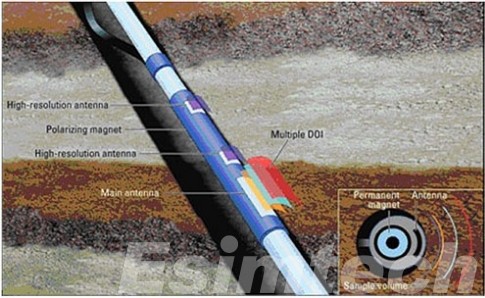
Principles of Nuclear Magnetic Resonance Logging
Basic Principles
Nuclear Magnetic Resonance logging relies on the principles of nuclear magnetic resonance, which involve the behavior of certain atomic nuclei in the presence of a magnetic field and radio frequency (RF) pulses. Here are the fundamental concepts:
1. Magnetic Field Interaction
When exposed to an external magnetic field, nuclei with non-zero spin (such as hydrogen protons in water and hydrocarbons) align with the field. This alignment creates a net magnetization along the direction of the magnetic field.
2. Radio Frequency Pulse
An RF pulse is applied perpendicular to the magnetic field, causing the aligned nuclei to tilt away from the magnetic field direction. This perturbation creates a transverse magnetization component.
3. Relaxation Process
Once the RF pulse is turned off, the nuclei return to their equilibrium state through two relaxation processes:
- Longitudinal Relaxation (T1): The time it takes for the nuclei to realign with the magnetic field, restoring the longitudinal magnetization.
- Transverse Relaxation (T2): The time it takes for the nuclei to lose phase coherence among the transverse components, causing the transverse magnetization to decay.
4. Signal Detection
As the nuclei relax, they emit RF signals that can be detected by the NMR logging tool. These signals are processed to obtain information about the subsurface formation.
Key Parameters of Nuclear Magnetic Resonance
1. T1 Relaxation Time
T1 is the time constant for longitudinal relaxation. It provides information about the energy exchange between the nuclei and their surroundings. Different fluids (water, oil, gas) and rock types have distinct T1 values, aiding in fluid identification.
2. T2 Relaxation Time
T2 is the time constant for transverse relaxation. It is sensitive to pore size and fluid type. Rocks with larger pores or free fluids exhibit longer T2 times, while smaller pores or bound fluids have shorter T2 times.
3. Free Fluid Index (FFI) and Bound Fluid Volume (BFV)
NMR logging differentiates between free fluids (movable hydrocarbons and water) and bound fluids (immobile water or hydrocarbons bound to the rock matrix). This distinction helps in assessing the producibility of the formation.
4. T2 Distribution
The distribution of T2 relaxation times provides a detailed picture of the pore size distribution and fluid types within the formation. This distribution is crucial for estimating permeability and identifying hydrocarbon zones.
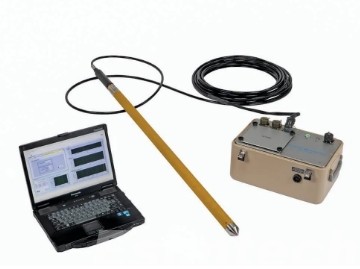
NMR Logging Tool and Operation
1. Tool Design
Nuclear Magnetic Resonance logging tools are typically designed to operate in boreholes, consisting of a magnet to create a static magnetic field and RF coils to generate and detect signals. The tool is lowered into the well, and measurements are taken at various depths.
2. Data Acquisition
The NMR logging tool emits a series of RF pulses and records the resulting signals over time. These signals are processed to extract T1 and T2 relaxation times, from which various formation properties are derived.
3. Data Interpretation
Interpreting NMR data involves analyzing the relaxation times and their distributions to derive porosity, permeability, fluid types, and other reservoir properties. Advanced software and expertise are often required for accurate interpretation.
Applications of Nuclear Magnetic Resonance Logging in the Oil and Gas Industry
1. Porosity Measurement
NMR logging directly measures the total porosity of the formation, distinguishing between bound and free fluid volumes. Bound fluids are typically associated with clay-bound water or immobile hydrocarbons, while free fluids can move and be produced. This differentiation is crucial for accurate reservoir evaluation.
2. Permeability Estimation
While well logging tools infer permeability indirectly, Nuclear Magnetic Resonance provides a more direct estimation by analyzing the T2 relaxation time distribution. This data helps in understanding the ease with which fluids can flow through the rock’s pore network, aiding in the design of effective production strategies.
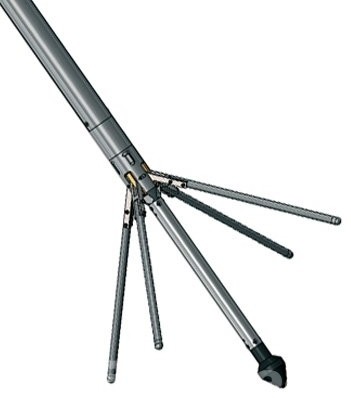
3. Fluid Typing and Saturation
Nuclear Magnetic Resonance logging can differentiate between oil, gas, and water based on their distinct relaxation time signatures. This capability allows for the identification of hydrocarbon-bearing zones and the determination of fluid saturations, which are essential for assessing the commercial viability of a reservoir.
4. Reservoir Characterization
Detailed NMR logging data can be integrated with other logging measurements to provide a comprehensive picture of the reservoir. This includes identifying lithology, detecting fractures, and understanding the spatial distribution of fluids, all of which are vital for optimizing production and enhancing recovery.
Advantages of Nuclear Magnetic Resonance Logging
Here is a chart summarizing the advantages of Nuclear Magnetic Resonance logging in the oil and gas industry
| Advantage | Description |
| Non-Destructive | Preserves the integrity of the formation while providing detailed subsurface information. |
| Direct Measurement | Offers direct measurements of porosity, permeability, and fluid types, unlike conventional logs that infer properties. |
| Enhanced Reservoir Understanding | Enables better reservoir modeling with detailed data, leading to more accurate reserve estimates and improved production planning. |
| Fluid Differentiation | Differentiates between oil, gas, and water based on relaxation time signatures. |
| Porosity Assessment | Accurately measures total porosity, distinguishing between bound and free fluid volumes. |
| Permeability Estimation | Provides a more direct estimation of permeability by analyzing T2 relaxation time distribution. |
| Detailed Pore Structure Analysis | Offers insights into pore size distribution, aiding in the assessment of fluid flow characteristics. |
| Immovable vs. Movable Fluids | Differentiates between immovable bound fluids and movable free fluids, crucial for producibility assessment. |
| Integration with Other Data | Enhances reservoir characterization by integrating with other logging measurements. |
| Operational Efficiency | Reduces uncertainties and enhances decision-making, leading to more efficient drilling and production strategies. |
| Versatility | Applicable in a wide range of geological settings and reservoir conditions. |
Challenges and Limitations in Nuclear Magnetic Resonance Logging
1. Complexity of Data Interpretation
- Signal Complexity: Nuclear Magnetic Resonance signals are influenced by multiple factors such as porosity, fluid type, and pore size distribution. Decoupling these factors to interpret the data accurately can be challenging.
- Environmental Factors: Variations in temperature, pressure, and salinity can affect NMR measurements, complicating the interpretation.
2. Tool Limitations
- Tool Size and Deployment: NMR logging tools are often large and require specific borehole conditions for deployment, which can be restrictive in certain wellbore environments.
- Power Consumption: Nuclear Magnetic Resonance tools consume significant power, which can limit the duration of data acquisition, especially in deeper wells.
3. Data Acquisition Challenges
- Time-Consuming: Nuclear Magnetic Resonance logging can be slower compared to other logging methods, as it requires multiple measurements to obtain accurate data.
- Signal Attenuation: NMR signals can attenuate quickly in certain formations, such as those with high clay content or where the rock matrix is highly magnetic.
4. Cost
- High Cost of Equipment and Operation: Nuclear Magnetic Resonance logging tools are expensive, and their deployment and operation add to the overall cost of well logging.
- Maintenance and Calibration: The tools require regular maintenance and calibration to ensure accuracy, adding to operational costs.
5. Environmental and Safety Concerns
Radio Frequency (RF) Safety: The RF fields used in NMR logging pose safety concerns, requiring careful handling and adherence to safety protocols.
Environmental Impact: The deployment of Nuclear Magnetic Resonance logging tools can have environmental impacts, especially in sensitive areas.
6. Limitations in Different Rock Types
Clay-Rich Formations: NMR logging can be less effective in clay-rich formations due to rapid signal decay and complex signal interpretation.
Carbonate Reservoirs: In carbonate reservoirs, the heterogeneity and complex pore structures can pose challenges for accurate Nuclear Magnetic Resonance interpretation.
7. Technical Expertise
- Need for Skilled Personnel: Interpreting Nuclear Magnetic Resonance logging data requires a high level of expertise and experience, which may not always be readily available.
- Training and Knowledge Transfer: Continuous training and knowledge transfer are essential to keep up with advancements in NMR technology and interpretation techniques.
How Simulation Technology Used for Nuclear Magnetic Resonance Logging
1. Tool Design and Optimization
- Virtual Prototyping: Well logging simulation systems allow for the virtual prototyping of NMR logging tools, enabling engineers to test and refine tool designs without the need for physical prototypes. This reduces development costs and speeds up the design process.
- Electromagnetic Field Modeling: Simulations help in designing the magnetic field generation and detection components of NMR tools. By modeling electromagnetic fields, engineers can optimize the tool’s performance and sensitivity.
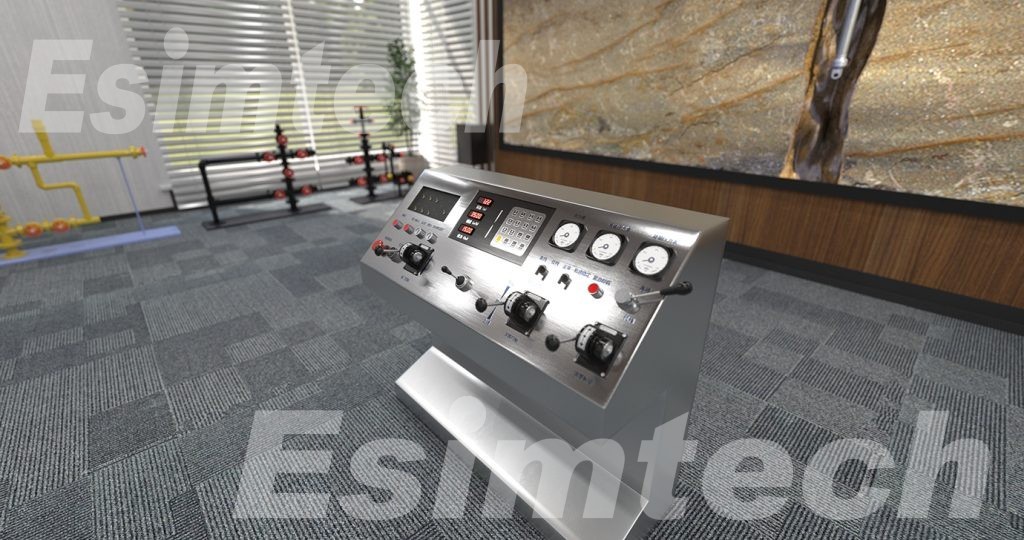
2. Data Interpretation and Processing
- Synthetic Data Generation: Simulations can generate synthetic NMR data for different rock and fluid scenarios. This synthetic data is used to develop and test algorithms for data processing and interpretation, improving their accuracy and robustness.
- Inverse Problem Solving: NMR logging often involves solving inverse problems to determine subsurface properties from measured signals. Simulations assist in developing and validating mathematical models and inversion algorithms, enhancing their reliability.
3. Training and Skill Development
- Virtual Training Environments: Simulations provide realistic training environments for geophysicists and engineers. Trainees can practice interpreting NMR data and operating Nuclear Magnetic Resonance tools in a virtual setting, improving their skills without the risks and costs associated with field training.
- Scenario-Based Learning: Simulation technology allows for the creation of various subsurface scenarios, enabling trainees to experience a wide range of conditions and challenges they might encounter in the field.
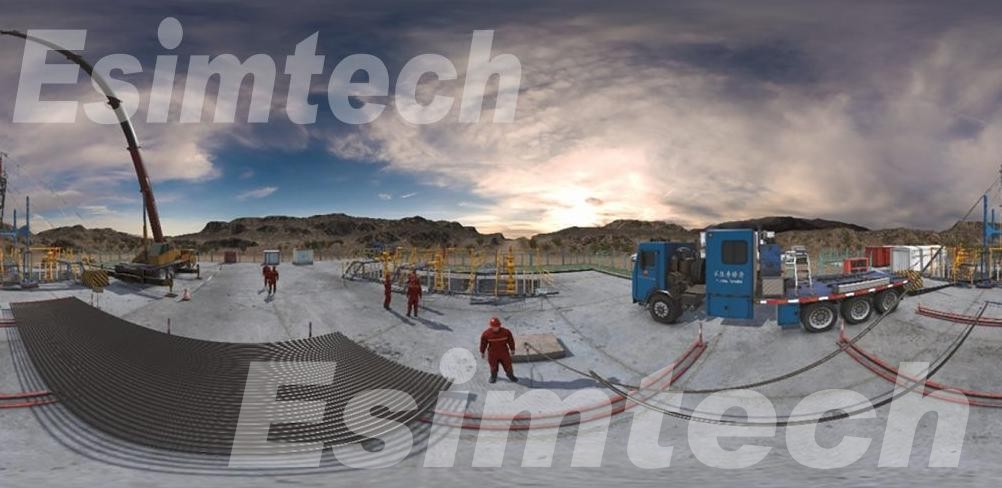
4. Reservoir Characterization
- Pore Structure Analysis: Simulations can model the pore structure of different rock types and their impact on Nuclear Magnetic Resonance signals. This helps in understanding how various pore geometries affect Nuclear Magnetic Resonance measurements, leading to more accurate reservoir characterization.
- Fluid Dynamics Modeling: By simulating the movement and behavior of fluids within the pore spaces of rocks, engineers can better interpret NMR signals and differentiate between different fluid types and saturations.
5. Error Analysis and Uncertainty Quantification
- Sensitivity Analysis: Simulations allow for sensitivity analysis, helping to identify which parameters have the most significant impact on NMR measurements. This aids in focusing efforts on the most critical factors affecting data accuracy.
- Uncertainty Quantification: By running multiple simulations with varying input parameters, engineers can quantify the uncertainty in Nuclear Magnetic Resonance data interpretation. This provides a better understanding of the confidence level in the results.
6. Integration with Other Technologies
- Multiphysics Simulations: Nuclear Magnetic Resonance logging often needs to be integrated with other logging techniques (e.g., resistivity, acoustic). Multiphysics simulations help in combining data from different sources, providing a more comprehensive subsurface characterization.
- Real-Time Data Processing: Simulations can be used to develop real-time data processing algorithms, allowing for immediate interpretation of NMR data as it is collected, which is crucial for making timely decisions during drilling operations.
